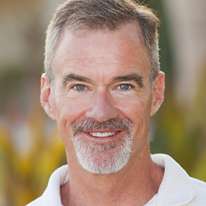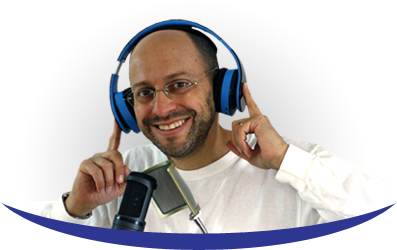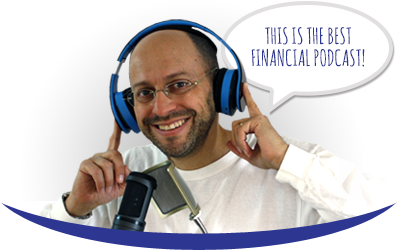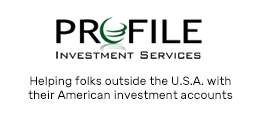
Coach Todd Tresidder shares how he retired at the age of 35. He discusses effective retirement investing strategies and compares owning a piece of real estate to investing in REITs.
Although past performance is not a guarantee for future returns, there are useful financial lessons that you can learn from looking at how people have handled certain market situations in the past. Doug Goldstein, CFP® talks about the most common investing mistakes, and how to avoid them.
Follow Todd Tresidder at http://financialmentor.com and on Twitter @Financialmentor.
Watch Todd Tresidder- Entrepreneurial and Investment Expertise on YouTube.
Read the Transcript
Interview With Todd Tresidder
Douglas Goldstein interviews Todd Tresidder, founder of Financial Mentor, who retired at the young age of 35. He shares his thoughts on saving, and how it can go a long way in helping you retire young. He also talks about real estate and REITs. What is the difference between these types of investments?
Douglas Goldstein: I am very happy to be talking to Todd Tresidder, who is a serial entrepreneur since childhood and then became a hedge fund manager and retired at 35. He now runs a cool site called Financial Mentor. One of the specific pieces you talk about is your radical move to retire young, in that you saved a huge amount of money. Am I getting the story right?
Todd Tresidder: Yes, you absolutely are.
Douglas Goldstein: How much money were you able to save every year, or were you trying to save every year?
How Did Todd Manage To Save So Much Money?
Todd Tresidder: The way it works is percentages of income, because your financial independence is a function of your spending level. I was saving roughly 70% of my income. At the time I was a hedge fund manager and I had a middle six-figure income so it wasn’t that hard to save. I still lived a very nice lifestyle and just banked a large amount of it, and the math is very simple.
I’ve got a post to my site about how anyone can retire in 10 years or less and it goes through the math of how if you can save a high percentage of your income, you can be financially independent relatively quick.
Douglas Goldstein: Are you suggesting that someone lives on rice and beans to achieve that?
Todd Tresidder: Quite the opposite. It was easy for me just because I had a high income. You can still do it on a low income, but you have to become an extreme frugalist. If you can save a high percentage of your income, you can be financially independent relatively quick. The higher the income, the less you have to turn to rice and beans. I lived a comfortable lifestyle but not lavish. I wasn’t an extreme frugalist but I wasn’t wasteful either.
Douglas Goldstein: What do you do with the money? If at the end of the year you had put away your 70%, what did you put it into?
What Todd Invested His Savings Into
Todd Tresidder: I ran a hedge fund, so I was one of the early pioneers at developing mathematical risk management systems for the financial markets. It’s something that MIT PhDs are doing nowadays but back then I was an early pioneer in the industry. I had investment methods that I employed the money in, in the paper asset world. Once we sold the company and I was financially independent, I ventured out into real estate and began buying apartment buildings as well.
Douglas Goldstein: That was an income play, but a lot of what you talk about is for people to manage their own money. Is what you did something you think that other people can do? Saving money and then putting it into a hedge fund?
Todd Tresidder: I didn’t put it into a hedge fund. I ran my own money. I just used methods that I developed for the hedge fund and the answer is yes, anybody can do it. Particularly if you go into real estate side. The real estate side is very intuitive.
Difference Between Paper Assets and Real Estate
Todd Tresidder: Paper assets are used for the terms: stocks, bonds, mutual funds, REITs, ETFs. Anyone can do it, but the paper assets side is counterintuitive. It works more from a mathematical and statistical standpoint, and so it can be a bit deceptive for the average person to do properly. The real estate side is very intuitive. Everybody knows what’s a good location, what is a good fore plan, what will live well, what won’t in terms of rental housing. It’s something that anybody is capable of doing.
Douglas Goldstein: One side is real estate and on the other side you mention REITs. Discuss the difference between the two.
Todd Tresidder: REITs is paper real estate. If you’re going to use it as a retirement vehicle, I’m an advocate of direct ownership of real estate. I’m U.S-centric, coming from the U.S., but in common law countries generally there’s tax advantage just to direct ownership of real estate. You also have the leveraged advantages of mortgage financing and so there’s very different aspects to owning real estate directly as opposed to owning it passively through REITs.
Douglas Goldstein: Isn’t the benefit of owning it through REITs that you get professional management? You don’t have to fix someone’s toilet in the middle of the night, as well as diversification?
Todd Tresidder: You can have all that with direct ownership too.
Douglas Goldstein: Real estate doesn’t seem that easy. There are a lot of people who lose money managing their own properties. Are there skills or personality traits that someone needs to be a landlord?
Todd Tresidder: No. The way I teach this is all asset classes are valid. There are three asset classes for financial independence. You’ve got business entrepreneurship, real estate, and a direct ownership of real estate, and then paper assets. Paper assets historically are more of a parking place for building wealth and a wealth building vehicle and of itself.
Data shows that most wealth is built through business entrepreneurship first, and then real estate second. Paper assets are generally third. They are generally used to park wealth built elsewhere.
Douglas Goldstein: Got it. There are different assets for different times in your life for different purposes.
Todd Tresidder: With all these different assets there’s no right or wrong. Each asset has a function and a purpose within your wealth plan. You’ve got to match them to your goals.
Douglas Goldstein: Yes, I think that is a big mistake. People sometimes read an ad and they go, “That looks good”. It may be good, but not be good for them. One of the things you teach, which I find counterintuitive, is you say that buy-and-hold is a myth. What’s the problem with that?
Is Buy-and-Hold a Myth and Why?
Todd Tresidder: The problem is if you want to be financially independent, and you want to live off your assets, there’s a premise to buy-and-hold, which is you’re supposed to accept market risk for a market-based return. The problem is that when you accept market risk, it gives you an inordinately long time frame in order to realize the positive expectancy of the asset. You’ll hear it commonly referred to that you’ve got to have a time frame of 20-plus years.
The problem is the retired planning research is unequivocally clear that how much wealth you have going into retirement is largely a function of your last 10 to 15 years of investment performance. That’s intuitively obvious because that’s where you have the most assets. If you get a double in the final 10 years versus your assets get halved in a bear market, that’s going to make or break your financial independence.
Similarly, your safe withdrawal rate in retirement, once you do retire, is largely a function of the first 10 to 15 years of performance. What you really have for someone who wants to live off their assets is sequentially two to three, 10, and 15-year periods. You don’t have a 30-year period as traditional financial planning advocates.
Each of those 10 or 15- year periods have to perform, and buy-and-hold can’t ensure that. I take the position that risk is something you don’t accept blindly, but rather it’s something that must be managed.
Douglas Goldstein: Is what you’re describing in terms of retirement being in 10 to 15-year chunks different from how the previous generation looked at it?
Todd Tresidder: I can’t address that. What I’m saying is that planning for retirement now is very different from how a previous generation planned for retirement. At least in the U.S., you worked for 30 years for a company and then you had a pension plan. Now everything’s gone to independent planning, where you have 401(k)s and everything is self-funded.
The other thing that’s changed too is we’ve got an increase in longevity. A lot of people will argue the longevity statistics based on the fact that it’s really driven by the infant mortality numbers. However, what we’re seeing now is that longevity is increasing at the aging end of the scale now and that’s particularly true for people who are educated and have greater wealth.
As you get increasing longevity, your money has to last longer. That changes the equations as well because you can’t safely amortize a volatile pool of assets for much longer than about 20 years. A lot of people are looking at 30-plus year time frames on the vol tops and that changes considerably. It’s a different ball game.
Douglas Goldstein: If people are thinking a little bit differently it means probably repeating many of the mistakes that their parents made. The problem is because their parents might have had a fixed pension that they were able to live on but now as you’re describing, the people have to take care of themselves and that can be scary, especially if you say, “Well, I’m a long-term investor. My advisor told me to invest long term.” It just doesn’t work that way. Is that the problem?
The Problem With Buy-and-Hold Investment Model, According to Todd
Todd Tresidder: Yes. If you’re going to be a buy-and-hold investor, you have to be able to accept 50% dry-downs on occasion. We’ve had two rounds of that since 2000 here in the U.S. That’s part of the buy-and-hold strategy, large dry-downs. The problem is not that those dry-downs occur in short periods of time but rather they create what I call flat spots of 10 years or longer.
In other words, the dry-down itself occurs rather rapidly and then the market digest comes back, goes back down. We’ve seen that since 2000, here in the U.S. When you do that, let’s say you’re using the 4% rule and you’re spending 4% from your portfolio. If you go 10, 15 years without investment performance, let’s use 10 years as an example, you’re probably going to be down 40%, 50% on the spending alone. You also have to consider the volatility effects of that spending.
The market will come back, just as buy-and-hold advocates say, but your portfolio won’t. These are very real problems and I don’t know anybody that goes through a bear market living off their portfolio, goes through a dry- down 40, 50%, and doesn’t change their life. That’s something that people don’t commonly talk about. The idea of living off a volatile portfolio and accepting market risk is something that a lot of people don’t understand very well.
Douglas Goldstein: I think the expression that I’ll often use when people talk about that is the phrase ‘to add insult to injury’. The injury is if the portfolio drops, the market goes down, and then the insult is you’re pulling money out so that by the time the market actually recovers you don’t have anything left in the market to recover with it.
The average annual return is in fact a little bit of a myth when people just apply it to their investing. The sale of the market makes 6% every year and I believe I can make that. That means if I only took out 4% every year I’d be fine, and the way you’re describing it is that that’s not really true. What are some other misconceptions you think people have about retirement planning?
Retirement Isn’t Necessarily About Age
Todd Tresidder: The word ‘retirement’ itself is a misconception. When you think of retirement, you think of an old person reading novels or playing golf or sitting there having an umbrella drink on a beach. Retirement is nothing more than a euphemism for old age financial independence. The truth of the matter is you can have financial independence at any age. I had it at age 35. I’m 55 now. That’s given me 20 years of life to create whatever I wanted to do with my life.
I think what people want to do is shift their thinking about all this. The math is true of retirement planning whether you retire at 35, or 55, or 65, or whatever age. You need to change your focus to, how can I achieve financial independence at any age?
The other one that I throw out is the idea that retirement is about amassing a bunch of assets. We always say, “How much money do I need to retire?” The whole premise is you’ve got to amass this massive pool of assets that you then amortize down, because you’re going to work hard for 40 years like a dog, and then you’re going to scrimp and save. Then you’re going to do nothing of substance for the remaining 30 years of your life while you’re retired. That’s a myth.
You can look at retirement more on a cash flow basis, and this is more than just semantics. What it does is it fundamentally changes how you approach the investment equation, and it changes all the math of retirement when you start looking at it from a cash flow basis as opposed to an asset-accumulation basis.
Douglas Goldstein: I think that it's very important to realize that it’s not just about how rich you are, it’s also about how you set up the money so that you can pay the bills every month. The goal is to be able to support yourself throughout all of your retirement years whether they are young retirement or old retirement.
Todd, how can people learn more about you and the work that you’re doing?
Todd Tresidder: The site is financialmentor.com, all one word. That’s my hub, that’s where everything is. I give away a free mini-course called 52 Weeks to Financial Freedom and I give away a free e-book for everybody that subscribes.
Douglas Goldstein: Todd Tresidder, thanks so much for your time.










